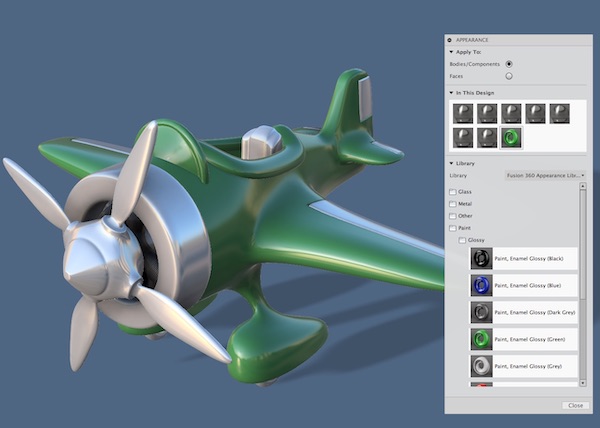As more software technology is on the cloud, you’re probably wondering when you’ll need to make the change for your mold design software. Finding a reason to invest in new technology is easy, but conveying the value of these investments to your superiors is more difficult. Follow these tips — including how to translate time savings into financial terms and speak the right “language” to reach upper management — to help you get the backing you need for any implementation project, including cloud-based design.

Image source: only_kim/stock.adobe.com
Writing a Good Proposal = Getting the Money!
Keeping up with the demands of a quickly evolving industry is a never-ending task — mold design firms must periodically upgrade their capabilities if they want to stay competitive. This includes new on-the-go technology, such as smart phones and learning how to integrate cloud-based design into your day-to-day work.
Problem Statement. No matter what your needs are for funding or support, you must start with a strong problem statement with a list of goals to present to upper management. This explains what the issue is that your company needs to solve and why. Good problem statements include answers to: who, what, when, where, and why. Getting the details down to these basics gives management a full picture of your proposal. It also helps define really what you’re asking for.
Perhaps you need more data storage to accommodate growing project files; or you’re equipping your client liaisons with virtual reality setups for a more immersive visualization experience; or to make the most of your mold designs, your design team needs to have cloud-based software to help make the design process faster, fluid, and more changeable on the fly, plus you want to be able to work with your customer more quickly.
Include in your proposal why implementation would speed or benefit your workflow and in turn benefit your firm, plus consider what components are required and who would be involved. Next, put yourself in senior management’s position for a moment and think about the terms that make sense to them and what they need to make an educated decision.
Return on Investment. The most persuasive tool at your disposal in this discussion is an estimated return on investment (ROI) — a prediction of how much financial benefit your company can expect to realize from the money invested in implementation. The savings or additional revenue generated by using the new technology — thanks to more efficient workflows or increased workload capacity, for example — must exceed the total costs of implementing the upgrade if you want senior management to say, “Yes!”
Calculating an ROI that is numbers-based might be difficult when you’re talking about implementing new technology. But what you can do is discuss positive and possible negative aspects, plus how you will handle those problem situations, plus compare any monetary changes with implementation. Let’s break down some general pros and cons, consider your own in addition to these:
Pros
-
Improved communication with customer
-
Improved communication with design team
-
Quicker iterations
-
Send and receive RFQs more quickly
-
Receive feedback of any problems quickly
-
Resolve problems quickly
-
Increased confidence in design “moldability”
Cons
-
Need for network bandwidth, if you live in an area with latency issues
-
Regular software fees
-
Fees for handheld technology
-
Cost of handhelds, or other device
-
Graphics power on the servers
Like many new investments, the ROI may be negative in the first year as initial investment, training, and ramp-up time are factored in. The question then becomes: Does the annual savings in future years pay well enough to justify the up-front investment? Don’t limit your analysis to looking at just one year.
Time and training. Timing for switching to cloud software should be fairly straight forward, but with any changes, you should plan to implement at a time when your team is not under a big deadline. If you want your boss to okay such a project, it must be rolled out in relation to the company’s needs as well.
Work with your IT department to implement and rollout all at once, so there is no lag time between desktop and cloud software. Actual use of the software should be seamless. Siemen’s NX, Mold Design software desktop and cloud versions are all similar but there may be some behind the scenes work that must be completed by IT and managers. Set aside a couple half days for training once IT has installed both software and any devices are assigned. If you need to plan a phased installation, start with your expert users first. They will be technology advocates when it’s time to bring the whole team along. Plus, they can help iron out the kinks as they learn.
The company’s new NX Mold Connect XaaS app (Xcelerator as a Service) is a stand-alone app designed to help mold designers work with clients to finalize designs more quickly and efficiently, and in doing so help with communication and work flow. Users can communicate changes to designs, saving time and money.
Deliver Your Pitch
Once you have developed your proposal and set a meeting, it’s time to deliver your pitch. Keep these rules in mind:
To educate your boss about what a technology change can do for your company’s workflows, you must communicate it in clear layman’s terms. If you’re a CAD manager or power user, you likely have a lot of jargon and technical terms in your vocabulary — now is the time to filter those out.
Your audience has many other concerns on their agenda, so condense and keep your proposal concise! Simplify and clarify everything as much as you can, while still being thorough.
Explain benefits in terms of efficiency and hours saved, not technical details.
Provide a specific example or two, mentioning the impact that using the new technology could have made on a recent high-profile project, for example.
Turning No into Yes
What happens if management says no? If management turns down the department-wide rollout you’ve pushed for, you may be able to get approval for a smaller-scale implementation instead. Be ready with a few more examples. If you can get even one user outfitted with the new technology and the tech to run it, that person can experiment with the impact of the technology on your firm’s types of projects and document their experiences. If the results are favorable, that hands-on reporting might persuade your superiors in a way that no marketing brochure can.
Be sure to keep asking open-ended questions. “Tell me more,” “What are you concerned about?” and “Are you concerned about the up-front costs or design ownership?”
Address each objection in turn, such as, “I understand we have a tight schedule. I believe that we can address that concern because if we take a couple hours to train everyone using the cloud version, we will end up saving more time during the next month. Plus, implementing the NX Mold Connect App will actually shorten our design time with the mold maker.” If you address the concerns at the source, you are more likely to receive funding and support for your initiative.
Given company’s budget cycles, you may need to wait a bit longer to receive funding, but keep your ideas in front of management so that your project gets a line-item on the next cycle. Keep talking about it with your users and management alike, so everyone keeps abreast of the technology as it develops.






Share This Post